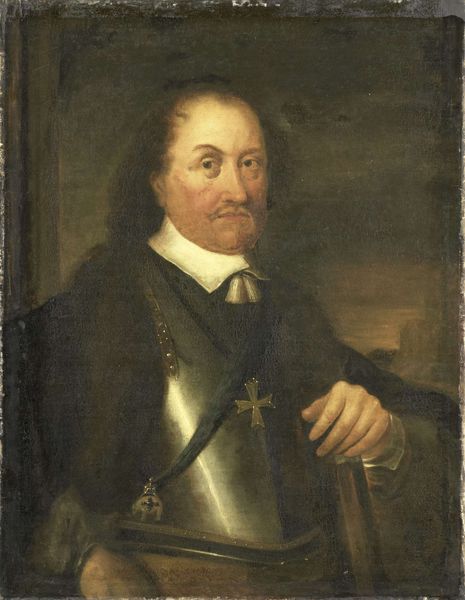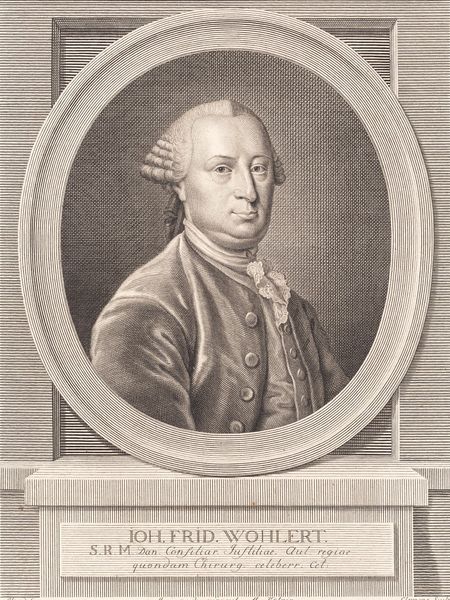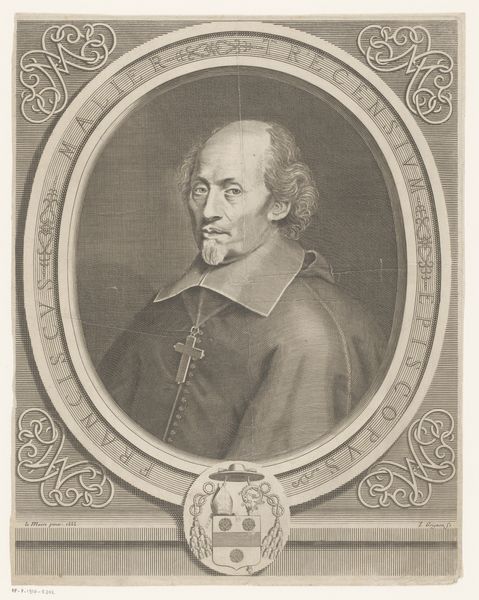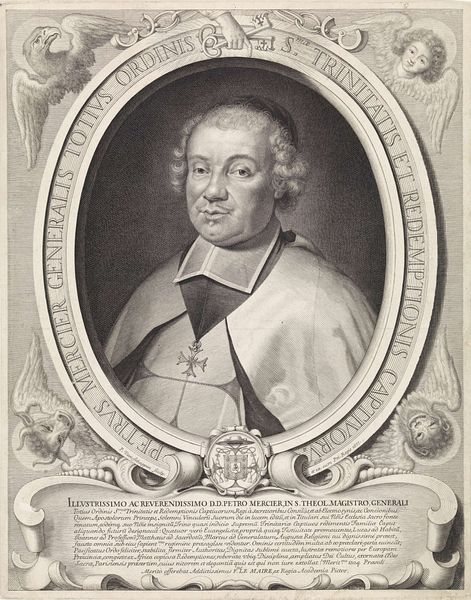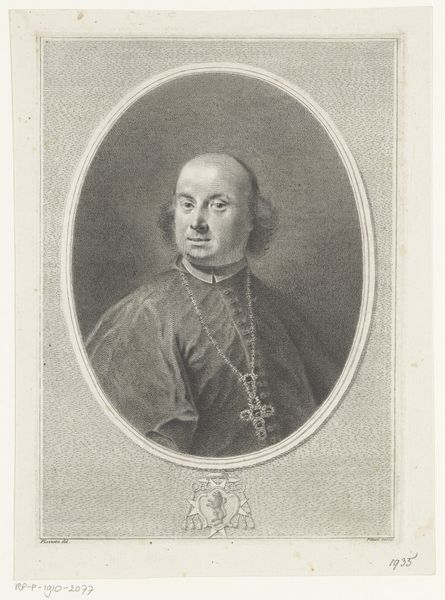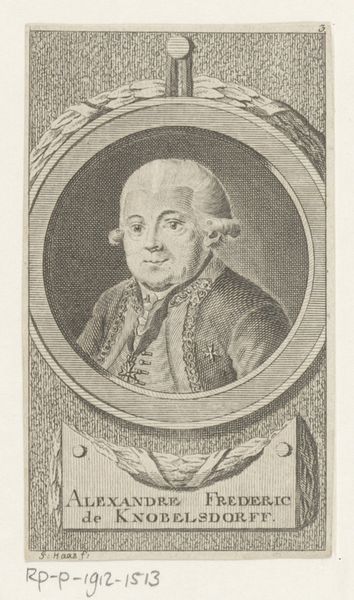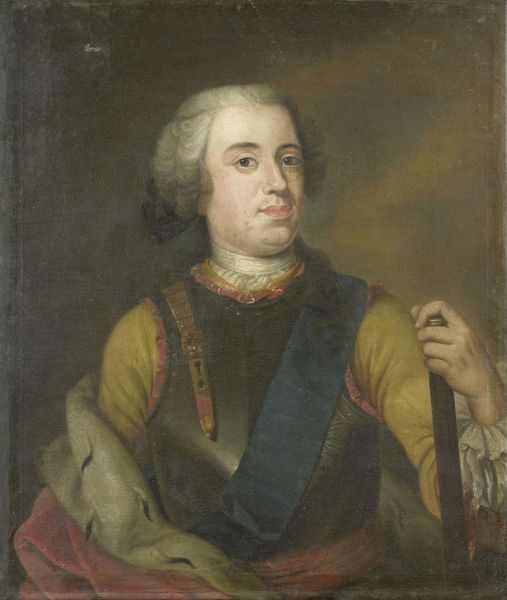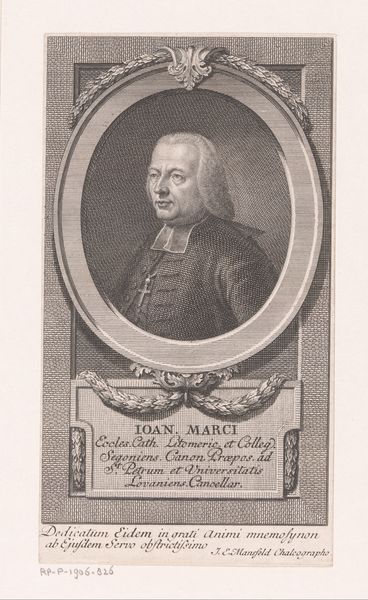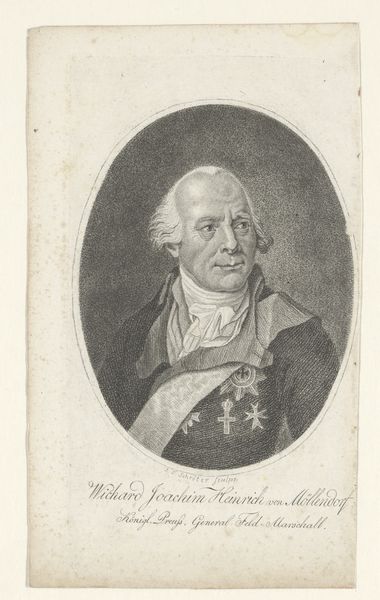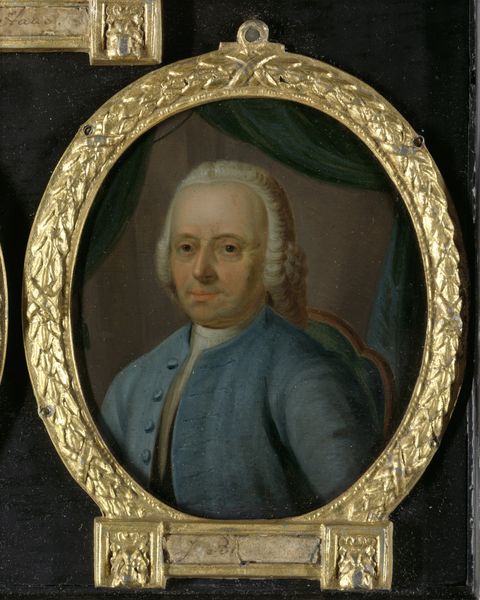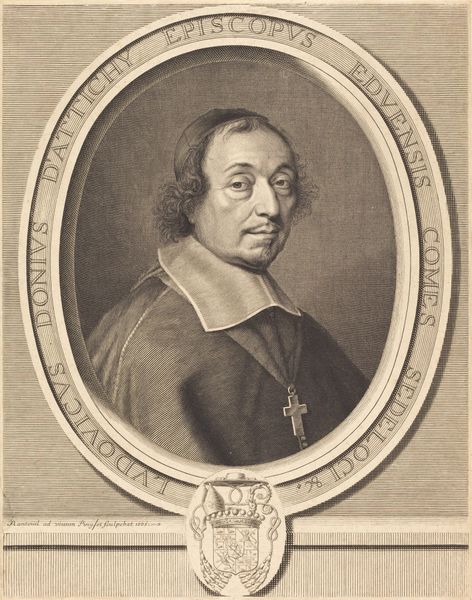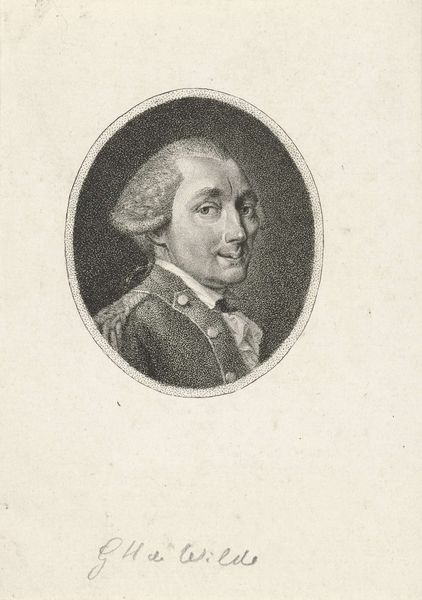
Portrait of Johan Maurits (1604-79), count of Nassau-Siegen and governor of Brazil 1670 - 1680
0:00
0:00
oil-paint
#
portrait
#
baroque
#
dutch-golden-age
#
oil-paint
#
history-painting
#
facial portrait
#
academic-art
#
portrait art
#
fine art portrait
Dimensions: height 15.9 cm, width 14 cm, depth 3.3 cm
Copyright: Rijks Museum: Open Domain
Curator: Looking at this, my first thought is the power dynamics at play. The weight of history presses heavily here. Editor: Indeed. Before us is a portrait of Johan Maurits, painted by Michiel van Musscher sometime between 1670 and 1680. He was, among other things, the governor of Dutch Brazil. Curator: And it’s vital to acknowledge that his governorship coincided with a brutal period of colonization and exploitation in Brazil, fundamentally shaping the social and racial hierarchy we still see today. What symbols can you make out here? Editor: Oh, several. His attire, particularly the medal hanging prominently on his chest, speaks of status, authority, and perhaps even divine right in his mind. The man clearly holds great value in the cross. It evokes a whole series of meanings regarding spiritual authority, allegiance, sacrifice... Curator: Exactly. These visual cues were intentionally crafted to project a specific image. It represents the colonizers using both the sword and the cross in the new world to promote European hegemony in what became called "the Americas". We must ask, what is *not* shown in this portrait? Where are the Indigenous voices? Editor: A valid point. This isn’t a holistic portrayal of history; it’s a carefully curated image intended to perpetuate a specific narrative. A narrative of conquest and domination, certainly. Van Musscher used dark, somewhat somber tones, to establish Johan's importance, so that he stands out against a darker background. Curator: Precisely. Even the fact that the portrait is displayed in the Rijksmuseum reinforces this colonial gaze. Whose stories are amplified, and whose are silenced in the construction of our historical memory? This makes this portrait not just a likeness but also an important piece in understanding post-colonial power structures. Editor: You are so right, understanding Johan Maurits, understanding the Cross on his chest helps to critically look at cultural narratives in portraits. Curator: Indeed. It prompts us to actively question whose perspectives are missing from the grand narrative of art and history.
Comments
No comments
Be the first to comment and join the conversation on the ultimate creative platform.
